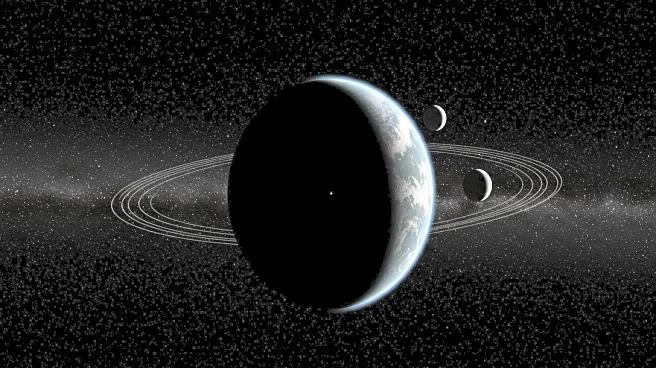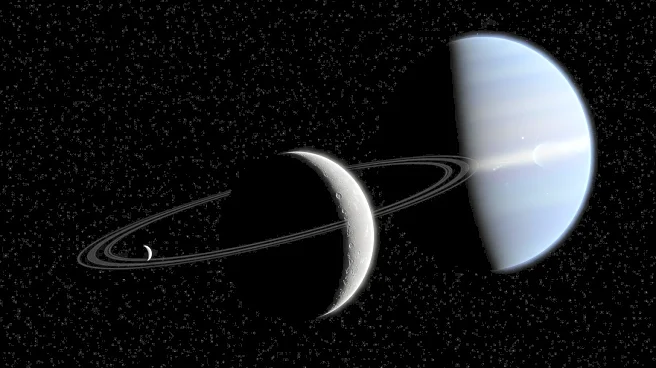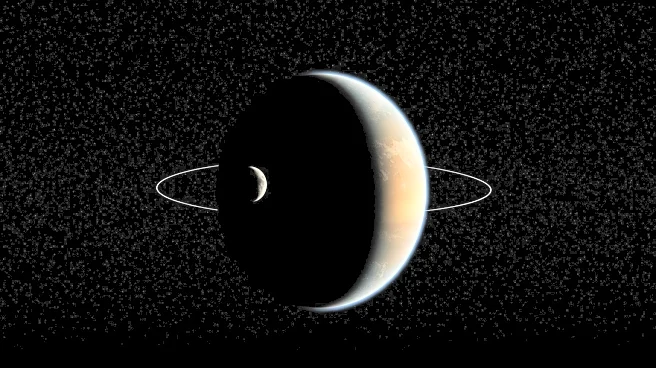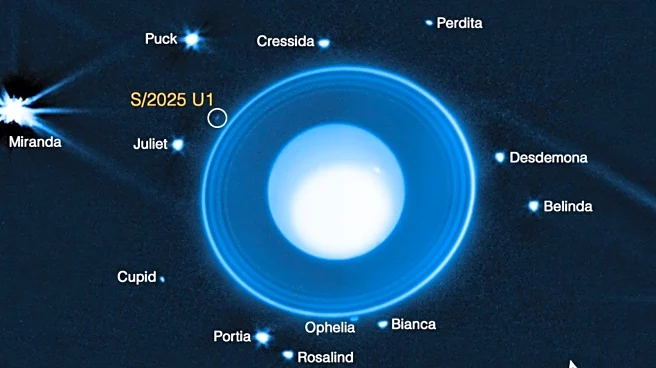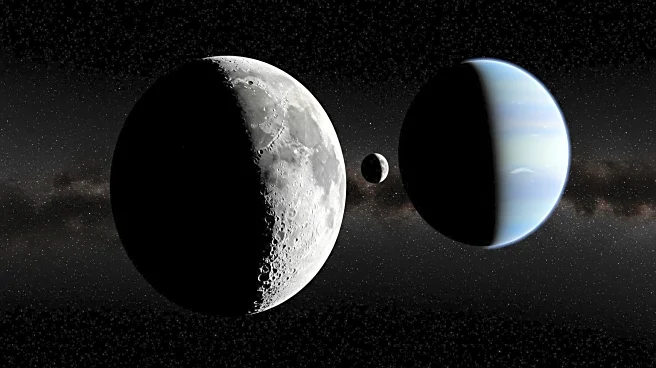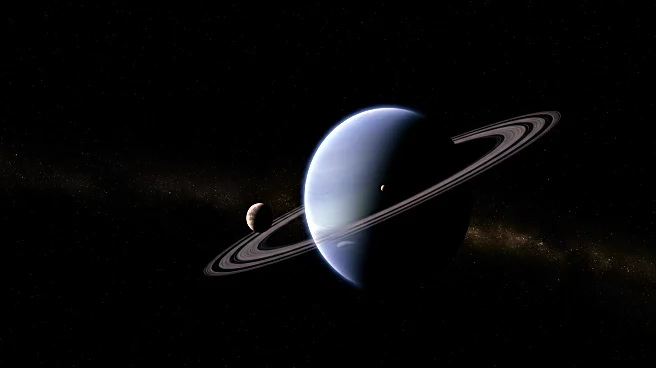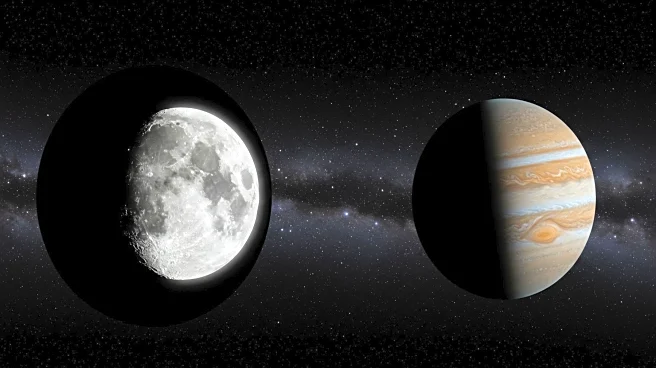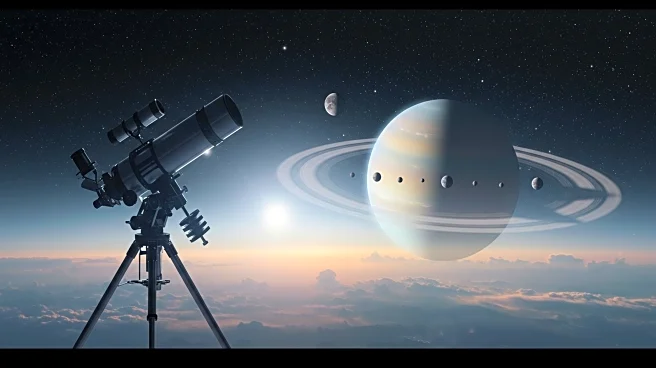What's Happening?
The James Webb Space Telescope has identified a previously unknown moon orbiting Uranus, increasing the planet's known moon count to 29. This discovery was made by a team led by astrophysicist Maryame El Moutamid from the Southwest Research Institute. The newly discovered moon, tentatively named S/2025 U1, is estimated to be about six miles wide. Its small size likely contributed to its previous undetection, even by Voyager 2 during its 1986 flyby. The moon orbits approximately 35,000 miles from Uranus' center, nestled between the moons Ophelia and Bianca. The discovery was made while the team was investigating Uranus' rings, which have unexplained sharp edges that suggest the presence of unseen moons.
Why It's Important?
This discovery is significant as it adds to the understanding of Uranus' complex ring and moon system. The presence of such a small moon could provide insights into the formation and maintenance of Uranus' rings, potentially acting as a 'shepherd' that helps maintain the structure of the rings by gravitationally influencing the dust and particles. The finding also suggests that there may be more undiscovered moons around Uranus, which could further illuminate the dynamics of the planet's ring system. This discovery underscores the capabilities of the James Webb Space Telescope in observing distant celestial bodies and phenomena that were previously undetectable.
What's Next?
The newly discovered moon, along with another moon found in 2023, awaits official naming by the International Astronomical Union. The team hopes to name the 2023 moon 'Violenta' after a character from Shakespeare's 'All's Well That Ends Well.' Further observations are planned to refine the orbits of these moons, which may lead to additional discoveries. The ongoing study of Uranus' moons and rings could provide further insights into the planet's history and the processes that govern its unique features.


